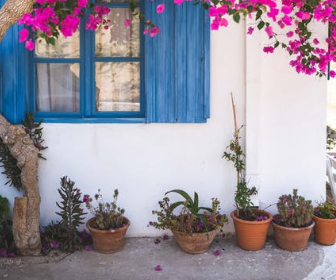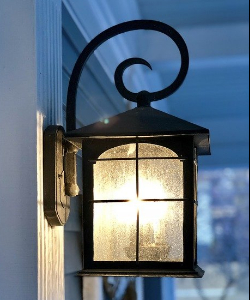How to Use Reflected Light to Boost Indoor Food Production
Growing food indoors or in an urban setting can be quite a challenge. You need to find the right kinds of plants, purchase or build tools, and make sure you have lots of time and patience. Oh, and don’t forget making sure your garden gets enough light so it can thrive! If your space doesn’t have an ample amount of natural light, there’s still hope! Believe it or not it’s possible to grow your food without direct sunlight! You just have to figure out ways to adapt to the lack of light, whether it be from buildings creating shade or south-facing windows.
The following is an excerpt from Fresh Food from Small Spaces by R.J. Ruppenthal. It has been adapted for the web.
If there’s one urban commodity that’s almost as precious as land, it’s light. Most city yards have high fences, and surrounding buildings can block sunlight as well. If your only available space is a balcony, ledge, or windowsill, then you’re probably getting less than the 6 to 8 hours of direct sunlight per day that is recommended for vegetable gardening. Fortunately, there are some tricks you can employ to help maximize the amount of light for your plants.
Basically, there are three main categories of sunlight for plants: full sun, partial sun, and full shade. Full sun is the 6 to 8 hours per day of direct light exposure that few of us get in cities. Partial sun is either direct sun for a shorter period, or dappled sunlight that may come through the leaves of an overhanging tree. (Reflected light might also fall in this category.) Full shade is a basically sunless condition in which vegetables will have a tough time growing. Fruiting vegetables such as tomatoes and cucumbers like plenty of light, although beans and peas can do with a lot less. Root vegetables such as carrots and radishes can be grown in partial sunlight. Leafy vegetables such as chard and spinach can grow steadily with very little light at all.
Onions are a little trickier because most varieties are day-length sensitive; that is, they need as many as 10 to 12 hours of sunlight to set and mature bulbs. One solution simply is to grow scallions (also known as green onions, spring onions, or bunching onions) instead, which are delicious and grow very quickly in short and long seasons. If you want onions to bulb up and mature, though, you will have to experiment with the right variety for your light situation.
There are a number of “short day” varieties available from nurseries and seed catalogs, and there are even a few “day-length neutral” varieties that have been developed. Your latitude also has an effect here. Check with your local extension agent or knowledgeable nursery advisor for help in selecting an appropriate type of onion.
 This chapter will be useful for any gardener suffering from a light deficit. Using the strategies mentioned here, you may be able to solidly double or triple the amount of light energy your plants get, which can make the difference between a miserable and a bountiful urban harvest. But first, you need to know how much sunlight your garden area receives. Time this, and write down how many hours and minutes of direct sunlight it gets. Is this mostly morning light or afternoon light? Remember that the sun will be several degrees higher in the sky during the summer than in the winter.
This chapter will be useful for any gardener suffering from a light deficit. Using the strategies mentioned here, you may be able to solidly double or triple the amount of light energy your plants get, which can make the difference between a miserable and a bountiful urban harvest. But first, you need to know how much sunlight your garden area receives. Time this, and write down how many hours and minutes of direct sunlight it gets. Is this mostly morning light or afternoon light? Remember that the sun will be several degrees higher in the sky during the summer than in the winter.
Reflected light is a powerful concept that has enabled many urban gardens to succeed. Reflected light is indirect sunlight that is bounced off reflective or light-colored surfaces, and it can still bring a lot of energy to your plants. If you want to grow fruiting vegetables such as peppers or tomatoes, but your garden only gets 3 or 4 good hours of sunlight per day, then reflected light might make up the difference.
Gardening beneath a wall can be a great advantage. Walls that are painted white or a light color, particularly stucco walls, reflect a lot of light and heat. They also can shelter a plant from wind and cool nighttime temperatures, creating a very favorable microclimate for your plants. In the northern hemisphere, south-facing walls are the most effective for reflecting light and warmth. Walls that face either east or west will pick up some additional early or late light and will translate some of this into warmth. Windows also can reflect light and heat, especially if they face south.
You also can increase your available light by adding your own reflector. This could be a piece of sheet metal, a board painted white, or cardboard covered with aluminum foil. Situate it on the darker side of your plants or in a nearby sunny spot where the light can be reflected back onto your growing space. Be careful with mirrors, glass, or any material that intensely focuses light; these could burn your plants or create a fire danger.
Don’t forget artificial light either. Some people grow plants on a balcony or driveway that sits directly under a porch light. If this light source remains on for several hours, perhaps even all night, that extra light energy can generate a lot of additional growth from vegetable plants. Be sure that your light fixture uses compact fluorescent (CFL) lightbulbs. These are much more energy-efficient than regular incandescents, and plants can grow foliage using the type of light they produce.
This raises an additional question: Should you consider using your own artificial lighting? Although hydroponics and indoor greenhouse-style gardening definitely can succeed where the sun does not shine, they are energy-intensive pursuits. Most sustainable gardening advocates would frown on anything more artificial than a lighted grow box for transplants. I would also make an exception for electrical sprouting machines, which use very little energy to produce large amounts of fresh food. But, for all intents and purposes, gardening with artificial light is wasteful unless you have access to renewable energy sources or are using that same light to live by.
As the world’s energy supplies grow scarcer and more expensive, hydroponics and artificial growing methods are likely to play less of a role.
Recommended Reads
Get a Jump on the Planting Season: Build Your Own Cold Frame
